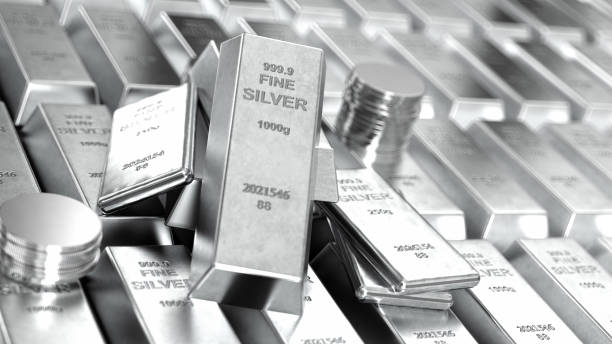The enduring fascination with silver spans centuries, transcending its role as mere currency to become a symbol of wealth, purity, and power. From ancient civilizations to modern investors, silver has maintained its status as a store of value, providing protection against economic instability and inflation. Beyond finance, silver’s cultural and symbolic significance is deeply rooted in mythology, religion, and luxury, making it a timeless metal cherished across generations. Even in today’s digital economy, silver continues to captivate collectors, investors, and industries, proving that its allure is far from fading.

1. Silver as a Store of Value: A Safe Haven in Uncertain Times
- Silver’s Role in Wealth Preservation
- Throughout history, silver has been hoarded during financial crises as a safe-haven asset.
- Unlike fiat currencies, which are subject to inflation and government policy shifts, silver retains intrinsic value, making it a long-term wealth preservation tool.
- Silver in Modern Investment Portfolios
- Silver remains a key asset in diversified portfolios, offering a hedge against inflation and economic downturns.
- The rising popularity of silver bullion coins (e.g., American Silver Eagle, Canadian Silver Maple Leaf) reflects its ongoing demand among investors.
- Silver’s Role in Global Economic Cycles
- Historically, silver has surged in value during currency devaluations, hyperinflation, and stock market volatility.
- The 1970s silver boom, the 2008 financial crisis, and the recent pandemic-driven silver rally all highlight its function as a counterbalance to economic instability.
2. Silver’s Symbolic Power: A Precious Metal Rooted in Culture
- Silver in Mythology and Religion
- In many cultures, silver is associated with purity, the moon, and protection against evil.
- In Christianity, silver appears in religious artifacts, while in Hinduism, it symbolizes prosperity.
- Ancient civilizations, from the Greeks to the Chinese, believed silver had healing and mystical properties.
- Silver in Art, Jewelry, and Status Symbols
- Silver has been crafted into luxury objects, ceremonial artifacts, and royal insignia for millennia.
- Silver jewelry, from Native American craftsmanship to high-end fashion, remains a symbol of elegance and status.
- The Modern Prestige of Silver in Collecting and Design
- Limited-edition silver coins, bars, and collectibles are in high demand among investors and numismatists.
- Silver remains a prestigious material in fine dining (silverware), awards (silver medals), and fashion accessories.
3. The Future of Silver’s Cultural and Financial Influence
- Silver in the Digital Economy and Blockchain-Based Assets
- As alternative assets grow in popularity, silver-backed digital tokens and blockchain-based silver investment products are emerging.
- The idea of “digital silver”, similar to Bitcoin’s reputation as “digital gold,” reflects its continued role in wealth preservation.
- Silver’s Role in Emerging Markets
- In many developing economies, silver remains a trusted savings instrument and an affordable alternative to gold.
- The demand for silver bullion and jewelry is rising in countries like India, China, and Mexico, where cultural traditions still emphasize its value.
- Can Silver Regain a Monetary Role?
- While unlikely to return as a currency standard, silver’s historical function as money continues to influence modern debates on monetary stability and inflation protection.
- Central banks and private investors still accumulate silver, reinforcing its status as a financial safeguard.
Conclusion: Silver’s Lasting Appeal Across Time
Although no longer a foundation of global finance, silver’s role as a store of value and a symbol of wealth, purity, and power endures. Its economic resilience, cultural significance, and investment appeal ensure that silver remains an integral part of both modern financial markets and human civilization. As the world faces new monetary challenges, technological advancements, and shifting economic landscapes, silver’s timeless allure continues to shine—proving that, even in a digital age, the “white metal” still holds its value.
